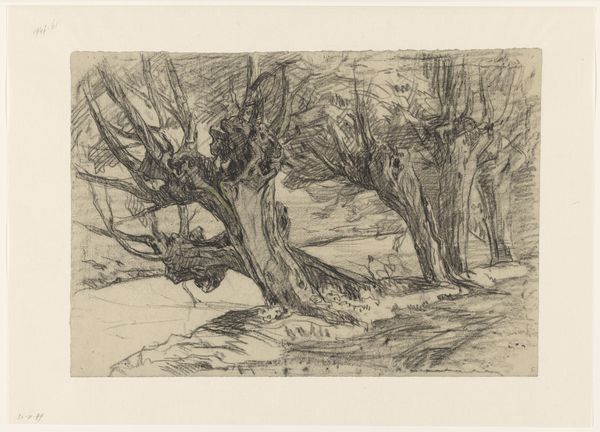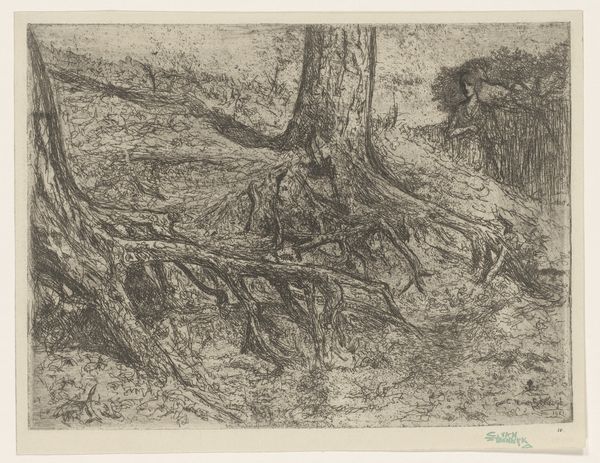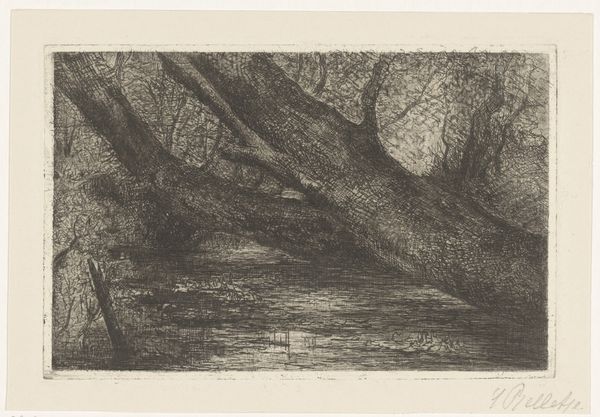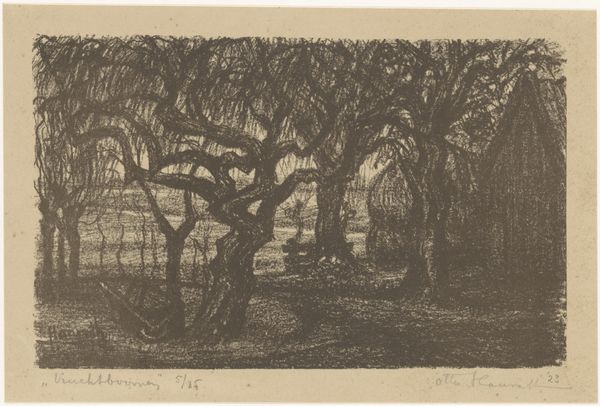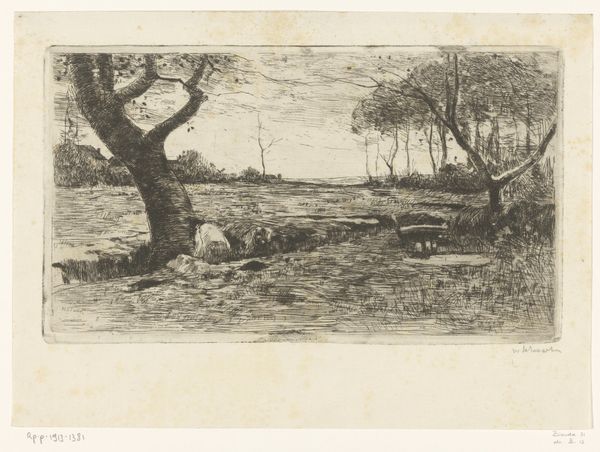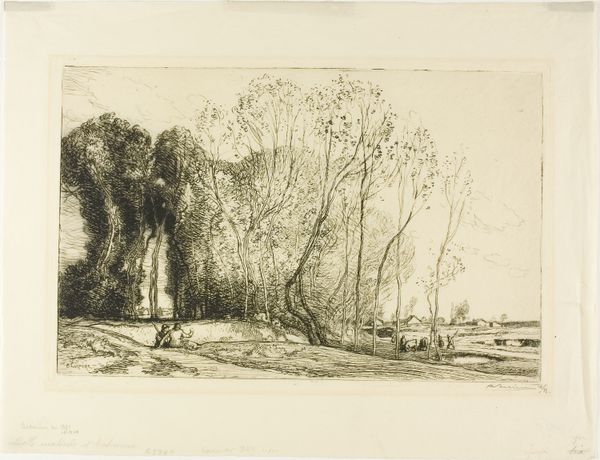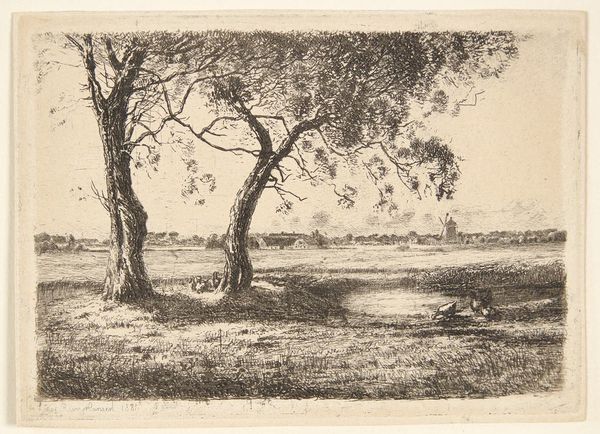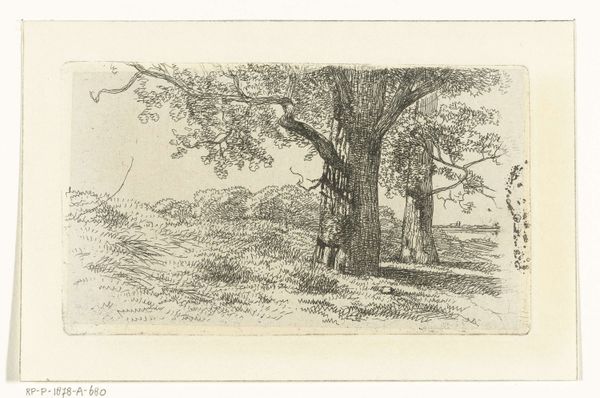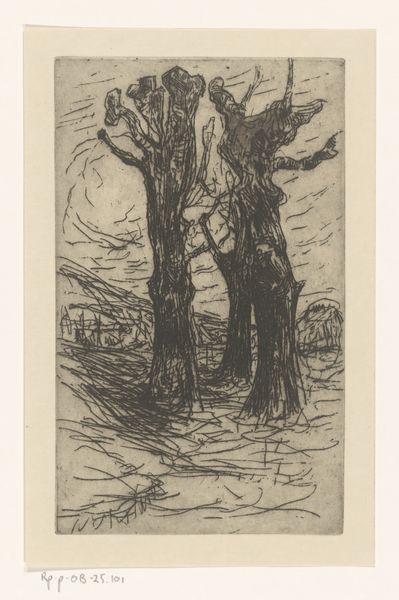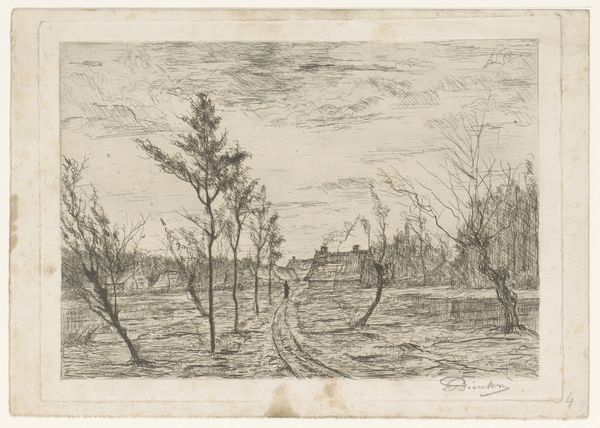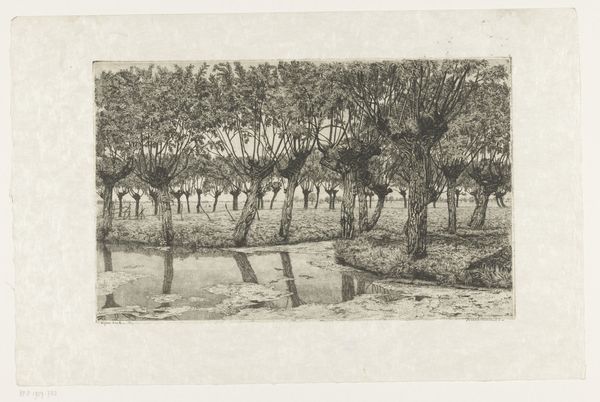
drawing, print, etching, paper, ink
#
landscape illustration sketch
#
drawing
#
light pencil work
# print
#
pen illustration
#
pen sketch
#
etching
#
pencil sketch
#
landscape
#
paper
#
personal sketchbook
#
ink
#
ink drawing experimentation
#
pen-ink sketch
#
line
#
pen work
#
sketchbook drawing
#
realism
Dimensions: height 151 mm, width 233 mm
Copyright: Rijks Museum: Open Domain
Curator: Here we have Otto Hanrath’s "Wilgen," created in 1917 using etching, ink, and paper. Editor: It has a somber, almost skeletal quality to it. The starkness of the branches against the pale sky is striking. Curator: This piece provides insight into the Dutch landscape tradition and its evolution during the early 20th century. Landscape prints were quite popular then and represented a visual articulation of national identity and rural life. Editor: I'm immediately drawn to the trees themselves. The willow, specifically, often represents sorrow, resilience, and the cyclical nature of life. Do you think that emotional weight was a conscious choice? Curator: Absolutely. Artists often employed familiar and resonant imagery to connect with their audience. Given the historical context of World War I raging during its creation, I imagine the weeping willow was a poignant and popular emblem for mourning and endurance. Editor: The way the bridge is sketched in the background offers a sense of man's intervention into this natural scene. Was Hanrath making a comment on industrialization? Curator: Possibly. In 1917, that bridge was no doubt a modern symbol of progress, maybe standing in opposition to the gnarled and aged willow in the foreground. I wonder if it can even be a reflection on societal transformations and tensions between the traditional agrarian lifestyle and industrial advancement in the Netherlands at the time. Editor: It seems that while a symbol like a weeping willow might speak to collective sorrow during wartime, placing it against that industrialized backdrop seems to imply an inherent threat to the cyclical rebirth it also represents. I love how much depth is held within those simple lines and shades. Curator: Exactly. A study of landscape offers complex layers that reflects collective experience, especially in moments of dramatic social change. Editor: Well, this piece certainly inspires deep consideration! Curator: It's a wonderful reminder of how much cultural meaning is encoded in images we might initially overlook.
Comments
No comments
Be the first to comment and join the conversation on the ultimate creative platform.

